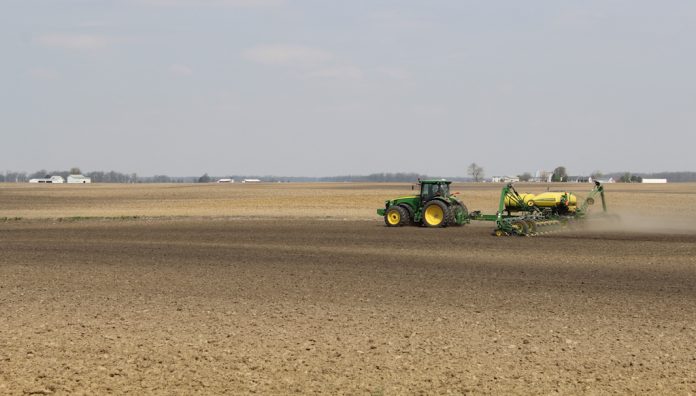The weather gave farmers plenty to talk about last year. Many had their planting delayed by heavy, consistent rain. Some weren’t able to plant some of their acres at all.
This year, spring is looking more promising.
That’s not to say that it’s all sunshine and daisies. Many farmers in central and south central Ohio didn’t get to plant their forages. Cool weather in early May has slowed down growth for forages. Corn planting is still behind the five-year average.
But forages are in better shape than last year and when it comes to corn and soybean planting, the state is ahead of where it was at this time last year.
“I think folks are happy in northwest Ohio right now that they can plant,” said Aaron Wilson, atmospheric scientist with Ohio State University.
Planting
As of May 10, Ohio had planted 33% of its corn, up from the 3% planted at this time last year, and just behind the 36% five-year average, according to the U.S. Department of Agriculture’s crop progress and condition.
The report also showed that Ohio had 24% of its soybeans planted, up from 2% last year and above the 14% five-year average. Pasture and range conditions are also doing better, with 69% good or excellent compared to 51% at this time last year.
Mark Sulc, OSU Extension forage specialist, said while people were able to plant forages in much of northeast and northwest Ohio, things were still difficult in central and south central Ohio.
“We’ve just had rain every couple days,” he said. “Not always a lot, but just enough to keep you out … so it’s spotty.”
OSU agronomists recommend that farmers finish planting forages by May 1 in northern Ohio and by April 20 in southern Ohio.
“You can plant later,” Sulc said. “The risk just goes up.”
When forages are younger in the summer, with weaker root systems, the hot, dry weather presents a greater risk to the plants.
Forages
Temperatures were cooler than average in April, and are expected to stay cool in early May. While temperatures could rise back up to average in the last half of the month, Wilson said, cool temperatures could present challenges for some crops.
The cool weather in early May slowed down forage growth, putting things behind schedule, Sulc said. Warmer weather should help forages start to recover, but there are risks associated with slower development, like nitrate accumulation, and the first harvest could be delayed by about a week.
“I think the situation looks a little more pessimistic for forages at the moment,” Sulc said.
But the overall forage outlook this year, Sulc said, is still far better than last year.
“Last year was kind of a combination of winter, and then the really wet spring,” Sulc said.
In 2019, forage crops faced winter damage. Then, as the heavy rain continued, widespread flooding and rain prevented some planting and made harvest difficult in surviving fields.
Some were able to plant later in 2019, in August. Sulc said the mild winter this year left those crops in good condition.
Usually, farmers try to plant forages before corn and soybeans in the spring, but recently, Sulc said, it seems that they’re all running together.
“It seems like it’s getting more challenging to plant in the spring,” he said.
Weather
This spring, southern and eastern Ohio have seen more rain than normal. Northwest Ohio has had less rain than the average, flipping the script from 2019, said Wilson.
But even the parts of Ohio that are seeing more rain aren’t seeing a repeat of 2019. This time last year, Wilson said, soil in much of the state was saturated with moisture. Now, most of the state is at a normal level of soil moisture.
“That’s a big difference,” Wilson said. “I would venture to say that some have already seen more dry days in this May, in the first seven days, than they saw in the entire month last year.”










